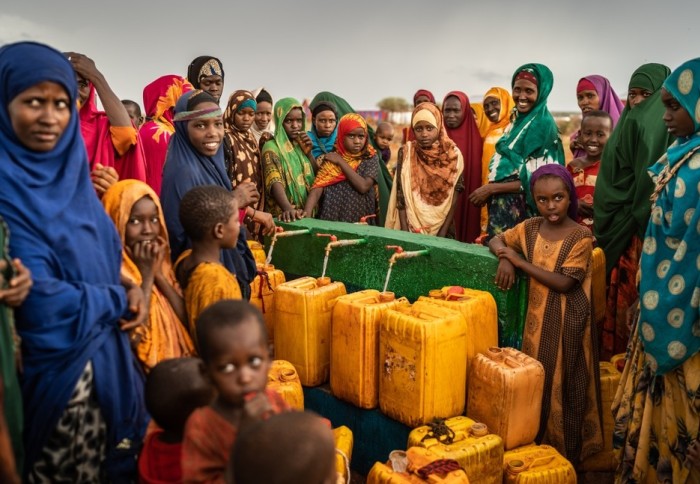

Ongoing drought conditions in the Horn of Africa have likely caused tens of thousands of deaths in Somalia – more than half of which were children.
These are the findings of modelling by researchers from Imperial College London and the London School of Hygiene & Tropical Medicine (LSHTM), published by the World Health Organization and UNICEF, which estimates that 43,000 excess deaths occurred in Somalia in 2022 due to drought conditions, with half of the deaths among children under five years old.
According to the researchers, the figures are similar to those recorded during the 2017 to 2018 droughts and may continue to rise due to the “unrelenting” conditions.
The estimates come during an ongoing period of drought in the Horn of Africa, believed to be one of the worst hunger crises of the last 70 years. The authors stress the need for urgent action to improve conditions if excess death rates are to return to pre-crisis levels.
Co-author Dr Oliver Watson, Schmidt Science Fellow at LSHTM and Visiting Researcher at the MRC Centre for Global Infectious Disease Analysis at Imperial, said: “In the face of Somalia's harrowing drought and hunger crisis, we estimate that 43,000 lives were tragically lost in 2022, with children under five uniquely impacted and constituting half of these casualties.
“The unrelenting droughts have created one of the most severe hunger crises in 70 years, demanding urgent humanitarian action. To prevent an even greater catastrophe, a multi-sectoral response is desperately needed to alleviate this dire situation and prevent further loss of life.”
Regions in the Horn of Africa including southeast Ethiopia, northern Kenya, and Somalia are experiencing ongoing severe drought conditions. In Somalia, this latest crisis, which began in 2021, is part of an unprecedented pattern of drought that has affected the country since 2008. It also comes against the backdrop of ongoing food insecurity, rising global prices and the impacts of the COVID-19 pandemic.
Estimated figures of excess deaths have previously been published for both the 2010 to 2012 famine and the 2017 to 2018 drought crisis in Somalia, the latter predicted to have resulted in 45,000 excess deaths.
The unrelenting droughts have created one of the most severe hunger crises in 70 years, demanding urgent humanitarian action Dr Oliver Watson LSHTM and Imperial College London
In the latest report, researchers aimed to expand estimates of excess deaths from 2018 up to December 2022. They also sought to forecast how death rates may change over the first six months of 2023 under scenarios where conditions either deteriorate, stay the same, or improve.
Using data from 238 mortality surveys conducted by the Food Security and Nutrition Analysis Unit for Somalia, the modelling revealed that the death rate overall and for children under five years old was higher between 2017 and 2018 and in 2022 compared to other periods.
Overall, death rates increased from approximately 0.33 deaths to 0.38 deaths per 10,000 person days between January 2022 and the end of that year. For children under five years old, the increase was estimated to be nearly double this level. Regions in south-central Somalia, are estimated to have had the highest number of excess deaths.
Although excess deaths in 2022 due to drought resemble those estimated in the 2017 to 2018 crisis, if conditions continue to deteriorate, by June 2023, overall deaths could reach 0.42 per 10,000 person-days – surpassing the 2017 to 2018 crisis in terms of peak death rate, duration and lives lost.
The researchers highlight that immediate action is needed if death rates are to return to those seen before the crisis.
Co-author Professor Francesco Checchi from LSHTM said: “Our findings suggest that tens of thousands of Somalis lost their life in 2022 due to drought conditions, with this toll set to increase in 2023. This is in spite of Somalis' own resilience, support by Somali civil society within and outside the country and a large-scale international response.
"Far from being scaled back, humanitarian support to Somalia must if anything be increased as the year progresses, and sustained until Somalia exits this latest crisis.”
‘Mortality patterns in Somalia: retrospective estimates and scenario-based forecasting’ by Watson, O and Checchi, F, will be published online. The project is funded by UNICEF and the World Health Organization.
-
This article is based on materials from the London School of Hygiene and Tropical Medicine.
Image Credit: Shutterstock / sntes
Article text (excluding photos or graphics) © Imperial College London.
Photos and graphics subject to third party copyright used with permission or © Imperial College London.
Reporter
Ryan O'Hare
Communications Division

Contact details
Tel: +44 (0)20 7594 2410
Email: r.ohare@imperial.ac.uk
Show all stories by this author



